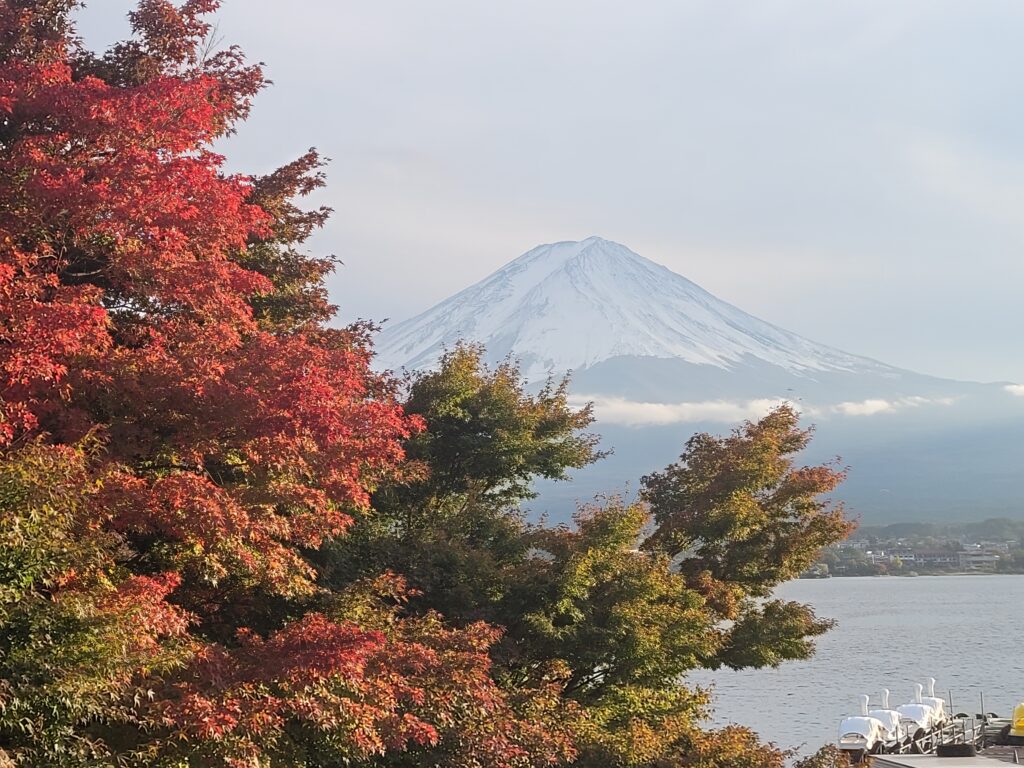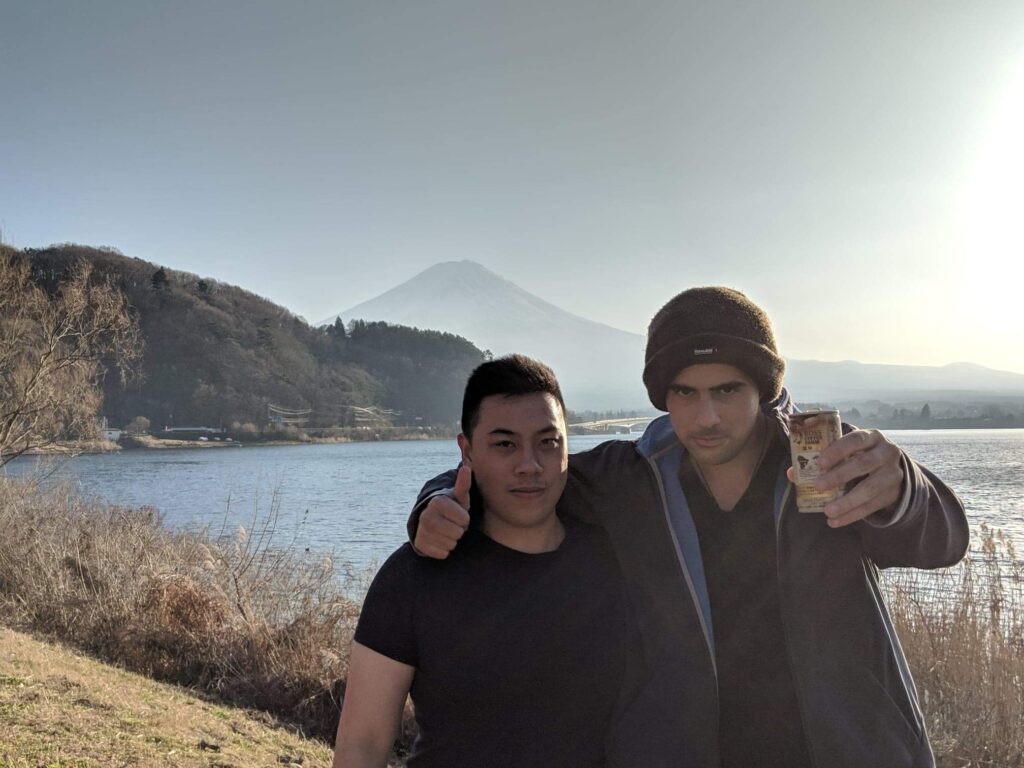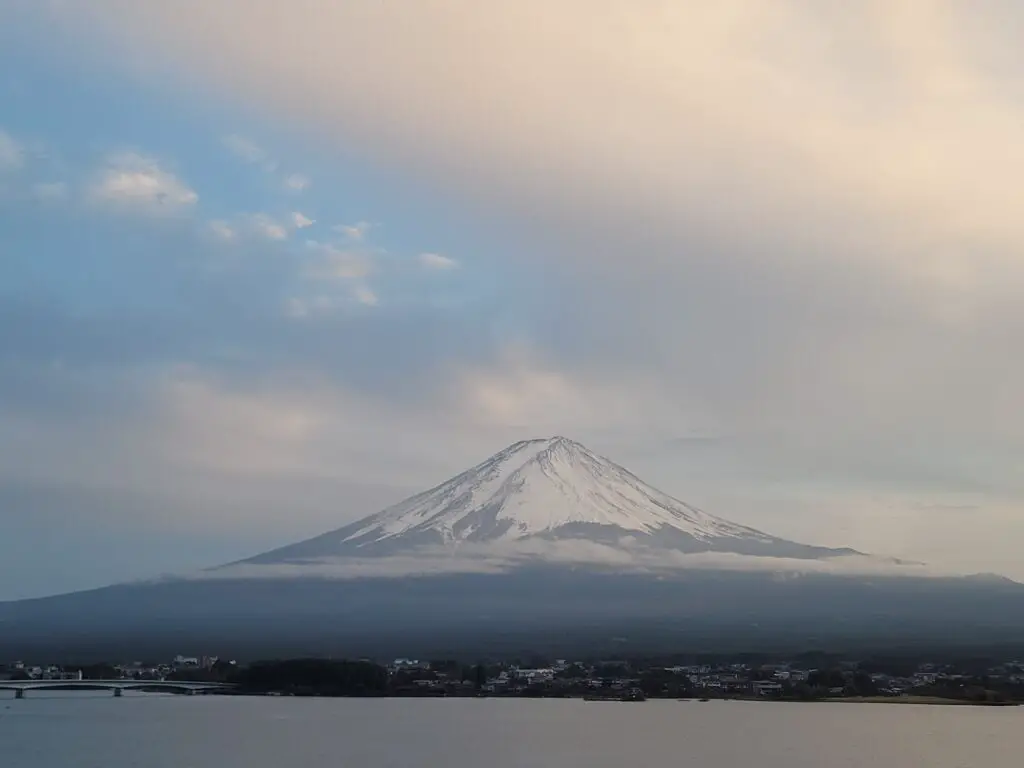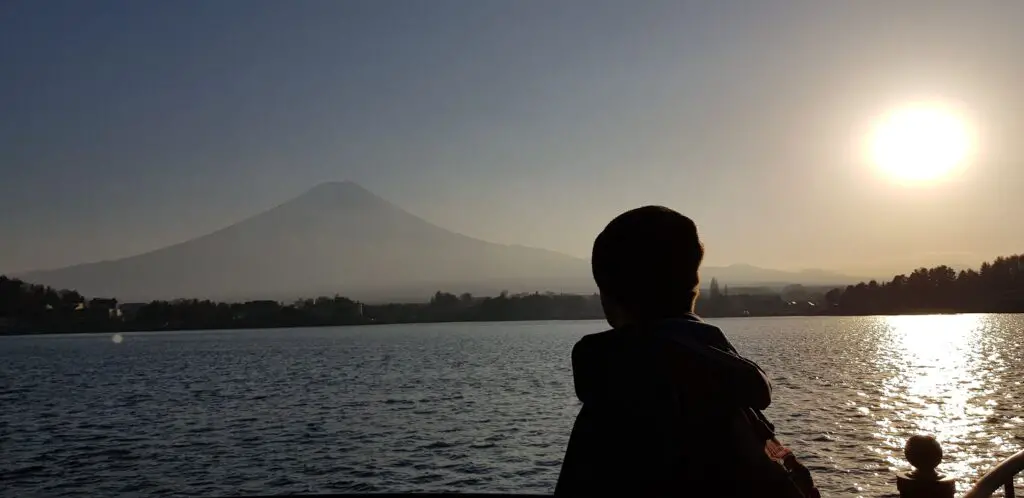Autumn and Winter may be neighboring seasons, but they are worlds apart when it comes to your Mt. Fuji trip. Here are 5 reasons why.

There’s never a bad time to visit Mt. Fuji, but each season brings something unique that may be of particular interest to you. In this article, I’ll be going over 5 notable differences I experienced visiting Mt. Fuji in both the autumn and winter seasons and revealing my personal pick for each scenario.
Difference #1 – Autumn Leaves

The most obvious difference between winter and autumn in Japan is the natural scenery that undergoes massive changes. In the winter, the trees shed their leaves to reveal naked branches while the autumn brings about marvelous red and gold-colored leaves.
Unless you have a thing for dead trees, you’ll most likely prefer the beautiful frames that the autumn season provides around Mt. Fuji. While the leafless branches of winter do have their own charm, I wouldn’t pass up the wonderful mixture of colors and thickness of Japan’s autumn flora for the lifeless branches of the Christmas season.
My pick: Autumn
Difference #2 – Weather & Temperature

Don’t get me wrong, I’m not hating on winter, in fact, you may find more of my preferences in favor of the cold season. For example, the weather and temperature of Japan’s winter months provide brilliant clear air that is far more breathable than the often humid air of the autumn season.
While you do need to pack some extra layers of clothing for the winter, there is something magical about having the cold breeze against your face as you stroll around the five lakes of Mt. Fuji. Furthermore, the days are surprisingly clearer in winter than they are in autumn (or perhaps I was lucky with timing), so I found the skies to be clear and blue in winter compared to the cloudy skies of autumn.
My pick: Winter
Difference #3 – Mountain Visibility

Despite the clearer skies of the winter months, when it came to Mt Fuji’s visibility, I was able to see the details of the snowy mountaintop much clearer in the autumn season than during my winter visit. The clouds that I had just complained about in the previous point actually provided an incredible decoration around the mountain to create a mystical and even epic look.
That’s not to say Mt. Fuji isn’t visible in the winter season, but simply that it is at its most visible during autumn and spring. Ultimately, visiting Mt. Fuji in winter will still bring you better results than if you visited in the hazy season of summer, a time that is unanimously agreed as the worst of the four seasons in terms of the mountain’s visibility.
My pick: Autumn
Difference #4 – Tourists & Crowds

This next point has little to do with the season itself and more to do with the implications it has on visitors to Mt. Fuji. Since my first point about autumn leaves is such a strong motivation for people to visit Japan in autumn (or in spring for the cherry blossoms), the seasons of winter and summer tend to get the short end of the stick.
On the plus side, this means you will have more of Mt. Fuji to yourself in the cold winter months of Japan. Instead of waiting for tourists to get out of the way of your perfect Mt. Fuji shot, you can take stunning aesthetic photos at will during the brilliantly barren season of winter.
My pick: Winter
Difference #5 – The Fuji Five Lakes

We’ve gone over the mountain visibility, and the clearness of the sky, now let’s talk about the effects of autumn and winter on the Fuji Five Lakes. In autumn, the lakes surrounding Mt. Fuji did not seem as crystal clear as they did in winter, albeit likely due to the differences in cloudy weather.
Nevertheless, the crystal clear lakes were a huge selling point for me during my winter visit to Mt. Fuji and were even a factor in determining my decision to re-visit. Unfortunately, I didn’t see the same beautiful-looking lakes in autumn, but the red and gold leaves certainly compensated for it.
My pick: Winter
Final Thoughts…

In conclusion, it doesn’t matter whether you choose to visit Mt. Fuji in autumn or winter, but what does matter is that you enjoy the unique characteristics each season offers. So whether you’re in it for the beautiful sparkling lakes and cool winter air or the perfect autumn leaf shot of the mountain in its best visibility form, you’re guaranteed a memorable experience for life when you visit Mt. Fuji!
Of course, if you are planning to visit Japan, you’ll need a way to get around the country as efficiently and affordably as possible. Japan Rail provides an abundance of travel passes to suit your travel needs. So whether you are traveling individually or as a group, the JR Pass is every traveler’s go-to for getting around and making the most of your time in Japan!
